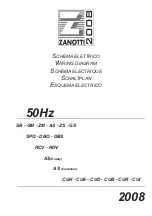
Use
42
3.8 Noises during operation
The refrigerator and freezer compartments
are cooled by means of a compression
system. In order to maintain the preset
temperature inside the refrigerator and
freezer compartments, the compressor
comes into operation in response to the
level of cooling required, and may operate
continuously if necessary. When the
compressor starts to function, it creates a
buzzing noise which generally diminishes in
intensity after a few minutes.
Another normal operating noise of the
appliance is a gurgling due to the coolant
flowing through the pipes in the circuit. This
noise is normal and does not indicate an
appliance malfunction. If it becomes too
loud, this may mean that there are other
causes. Checks must then be made to
ensure that:
• The refrigerator is properly levelled on
the floor and does not vibrate when the
compressor is in operation: if this is not
the case, adjust the appliance's feet until
it is level;
• The drawers, shelves and trays on the
door are correctly positioned in their
holders: if they are not, put them in
correctly;
• Bottles and containers on the various
shelves are stable and not touching each
other: otherwise, the vibration resulting
from compressor operation could
generate noise;
• Do not place the fridge in such a way
that it is in contact with furniture or other
household appliances.
3.9 Heated front surface
There is a front surface heating system
inside the cabinet to limit the formation of
condensation around the door seal.
3.10 Turning the appliance off
Whenever the appliance is to remain
unused for long periods, it should be
switched off.
1. Keep the ON/OFF
button on the
control panel pressed for 3 seconds.
The
symbols are displayed on the
refrigerator and freezer temperature
displays.
2. Unplug the appliance from the wall
socket.
3. Empty the compartments.
4. Once the freezer has fully defrosted, dry
any residual accumulated moisture with
a tea towel.
Leave the door ajar to ensure that
moisture and stagnant air do not
cause unpleasant odours.
Summary of Contents for FAB32LBL3
Page 24: ......









































